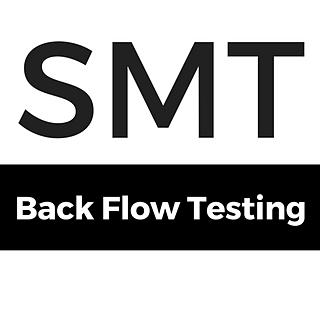Backflow preventer works in Fire Protection Systems
- Steve Tamkee
- Jul 22
- 3 min read

We talk a lot about how backflow prevention is a requirement in every municipality in British
Columbia. However, it’s also essential to understand not only why backflow prevention is important, but also how it works. One of the most common applications that we offer here at SMT Backflow Service is backflow prevention for fire protection systems. These sprinkler systems play a crucial role in maintaining the water supply and ensuring public safety.
How does a backflow preventer work in a fire protection system?
Backflow preventers are designed to stop the back-siphonage or backpressure of water through a water system. When it comes to fire protection systems, the primary goal is to prevent contaminated water from entering the public water supply.
Fire protection systems are “wet” systems, meaning that they contain water held at pressure inside the pipes. The water is released when the system is activated in the event of a fire. Because the system is designed to carry water, the water within the pipes can become stagnant and contaminated. Even though it comes from the public water supply, it is not safe for consumption (regardless of whether that water is potable or not).
Backflow preventers have two one-way valves that prevent water from flowing backward through the sprinkler system. These are called check valves, and they ensure that water flows only one way, thanks to the added redundancy measures. The check valves operate independently, with different pressure-relief settings, allowing them to maintain the correct pressure within the system.
Type of backflow preventer for a fire protection system
Of the different types of backflow prevention assemblies, there are two common backflow preventers that are installed on fire protection systems. These are:
Double check valve assembly (DCVA)
Reduced pressure assembly (RP)
Both of these assemblies have different strengths, but they are both reliable for installation on fire protection systems.
DCVA
DCVA backflow preventers are generally installed in low-hazard settings. It is made up of two independent spring-loaded check valves as well as two shut-off valves.
RP
RP backflow prevention assemblies are typically used in high-hazard settings where cross-connection contamination can introduce chemical or other contaminants into the water system. These backflow assemblies are necessary when the risk of backflow is through both backpressure and backsiphonage.
Reduced-pressure devices have a pressure relief valve that regulates the pressure within the system. A difference in pressure between the two check valves will open the relief valve, allowing the water system to discharge the contaminated water.

Where is a backflow preventer installed on a fire sprinkler system?
Because the purpose of a backflow preventer is to stop the flow of water back into a water system, backflow prevention assemblies are installed upstream in the system. This applies to fire sprinkler systems as well, which means that contaminated water will always be on the downstream end of the backflow preventer, thereby mitigating the risk of cross-contamination.
For the most part, backflow devices must be installed a minimum of five feet from the meter service and in a position where no part of the device can be submerged. For ease of access, backflow devices should be installed at a minimum height of 12 inches above the ground with ample space on either side and should be safeguarded against the elements.
Testing backflow preventers in fire protection systems
Annual inspection and maintenance of your backflow preventer is necessary even in a fire protection system. No matter if you’re in the City of Vancouver, Surrey, Coquitlam or Kamloops, backflow prevention is a mandatory step for any fire protection system.
If your backflow preventer is coming due for its annual maintenance, give us a call and schedule an appointment.
Or, if you’re looking to install a fire protection system in your building and need a backflow device installed, we can also assist with that.



Comments